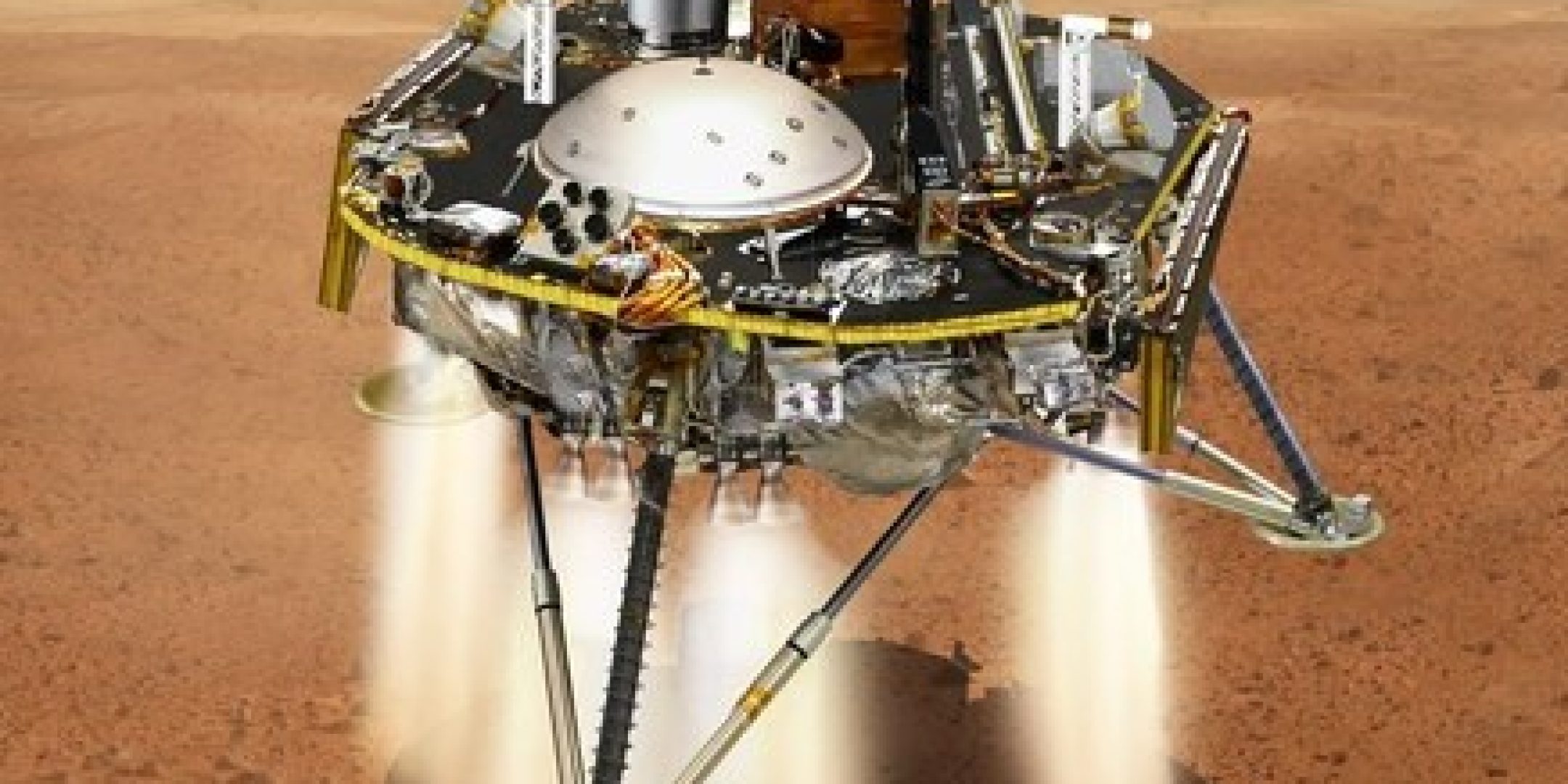Monday 26 November at 20:54 CET, InSight (INterior exploration using Seismic Investigations, Geodesy and Heat Transport) landed on Mars with the French SEIS seismometer (Seismic Experiment for Interior Structure), the mission’s main instrument, in the western portion of Elysium Planitia. Launched on the night of 5 May from Vandenberg Air Force Base, California, InSight is now all set to begin its two-year mission to probe the red planet’s deep interior and attempt to answer the question taxing the minds of planetologists everywhere: Mars may have been habitable, but did it ever actually support life?
The Mars landing was carried live from the Cité des sciences et de l’industrie in Paris, in the presence of https://fscience-old.originis.fr/wp-content/uploads/2023/06/GLOC_Oslo_Norway_S2_27juillet2022_web-2-1.jpg President Jean-Yves Le Gall, Antoine Petit, Chairman & CEO of CNRS, the French national scientific research centre, Bruno Maquart, President of Universcience, Marc Chaussidon, Director of the IPGP global physics institute in Paris, Franck Poirrier, Chairman & CEO of Sodern, and a broad panel of representatives from the science community studying Mars.
InSight is the 12th mission of NASA’s Discovery Program to which https://fscience-old.originis.fr/wp-content/uploads/2023/06/GLOC_Oslo_Norway_S2_27juillet2022_web-2-1.jpg and the German space agency DLR are contributing. The mission’s science goal is to learn more about the deep interior structure of Mars and how it evolved into the icy desert we know today. InSight will deploy sophisticated geophysical instruments never used before on Mars to gauge the planet’s seismic activity, internal heat flow and subtle variations in its rate of rotation. Many scientists believe that in its early life Mars had an environment similar to Earth’s before becoming an icy desert.
The SEIS seismometer is the core instrument of the InSight mission. https://fscience-old.originis.fr/wp-content/uploads/2023/06/GLOC_Oslo_Norway_S2_27juillet2022_web-2-1.jpg is lead contractor and IPGP (CNRS/Paris Diderot University) is the instrument principal investigator. https://fscience-old.originis.fr/wp-content/uploads/2023/06/GLOC_Oslo_Norway_S2_27juillet2022_web-2-1.jpg is funding French contributions to the mission, coordinating the international mission consortium (*) and responsible for integrating, testing and supplying the complete instrument to NASA. IPGP designed the very-broad band (VBB) sensors and tested them before delivery to https://fscience-old.originis.fr/wp-content/uploads/2023/06/GLOC_Oslo_Norway_S2_27juillet2022_web-2-1.jpg. The SEIS seismometer is designed to analyse ‘marquakes’ and meteorite impacts to probe Mars’ interior.
https://fscience-old.originis.fr/wp-content/uploads/2023/06/GLOC_Oslo_Norway_S2_27juillet2022_web-2-1.jpg has developed a dedicated ground segment at its Toulouse Space Centre called SISMOC (SeIS on Mars Operations Centre) to send telecommands to SEIS throughout the mission and analyse telemetry from Mars. Seismic data collected at SISMOC and transferred to IPGP’s Mars SEIS Data Centre will then be distributed to scientists around the world and through the SISMO at School network (GeoAzur). Other research laboratories belonging to CNRS—the IMPMC mineralogy, materials physics and cosmochemistry institute, the IRAP astrophysics and planetology research institute, the LGL-TPE Earth, planets and environment geology laboratory in Lyon, the LMD dynamic meteorology research laboratory, the LPGN planetology and geodynamics laboratory in Nantes and the Cote d’Azur Observatory (OCA)—and the ISAE aeronautics and space institute are providing co-investigators who will be conducting initial analyses of the mission’s science data. https://fscience-old.originis.fr/wp-content/uploads/2023/06/GLOC_Oslo_Norway_S2_27juillet2022_web-2-1.jpg, JPL, IPGP and ISAE will also be helping to upgrade SEIS’s flight software.
After today’s landing, Jean-Yves Le Gall commented: “InSight’s landing on Mars marks a historic milestone in studying the red planet. It’s a great source of pride to us here at https://fscience-old.originis.fr/wp-content/uploads/2023/06/GLOC_Oslo_Norway_S2_27juillet2022_web-2-1.jpg that NASA conceived this mission around the French SEIS seismometer, which is a testimony to the rich relationship we have forged with the scientific community that has been supporting the idea of such a mission for more than 20 years, with industry and in particular Sodern, which built the SEIS instrument, and with NASA and JPL, with whom we have an exceptional partnership. Our science teams are now looking forward to receiving data from SEIS to try to resolve the question of why Mars lost its water and most of its atmosphere. They will also be working to determine whether its core is solid or liquid. A new era in Mars science beckons before us!”
CNRS Chairman & CEO Antoine Petit added: “On 5 May, I had the pleasure of being at InSight’s launch to Mars. I would like again today to warmly thank the science teams and our partners for the sterling work they have done: the first complete geophysical station is now in place on the surface of Mars, following in the footsteps of those put on the Moon by the Apollo missions. The first science data will be arriving in a few months’ time and our laboratories will be unveiling the first ever model of the planet’s deep interior structure. These results are the fruit of international collaboration between research and industry and will lay the foundations for comparative planetology of the solar system.”
(*) JPL, the Swiss Federal Institute of Technology (ETH Zurich), the Max Planck Institute for Solar System Research (MPS, Göttingen, Germany) Imperial College London and Oxford University supplied subsystems for SEIS.








